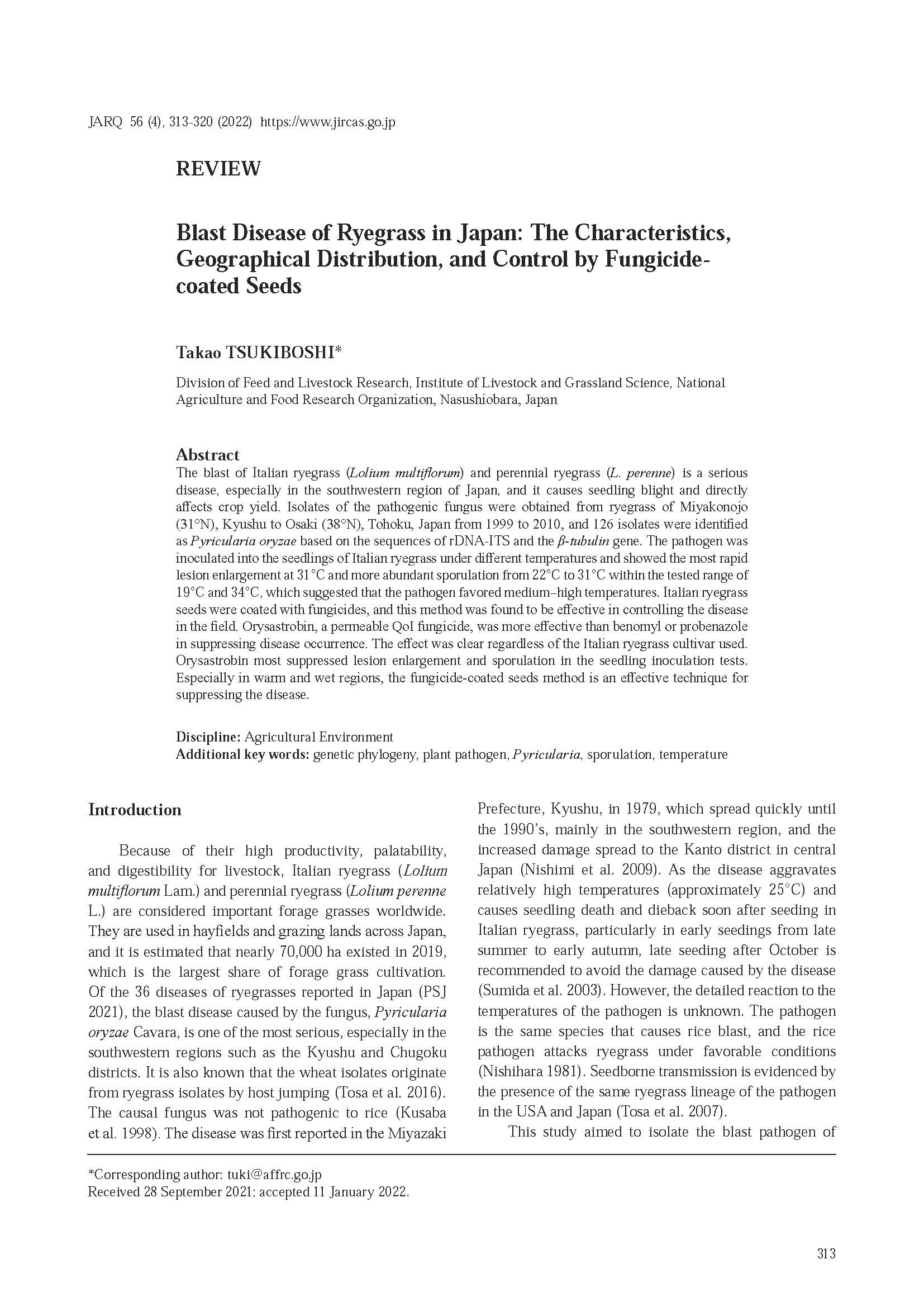The blast of Italian ryegrass (Lolium multiflorum) and perennial ryegrass (L. perenne) is a serious disease, especially in the southwestern region of Japan, and it causes seedling blight and directly affects crop yield. Isolates of the pathogenic fungus were obtained from ryegrass of Miyakonojo (31°N), Kyushu to Osaki (38°N), Tohoku, Japan from 1999 to 2010, and 126 isolates were identified as Pyricularia oryzae based on the sequences of rDNA-ITS and the β-tubulin gene. The pathogen was inoculated into the seedlings of Italian ryegrass under different temperatures and showed the most rapid lesion enlargement at 31°C and more abundant sporulation from 22°C to 31°C within the tested range of 19°C and 34°C, which suggested that the pathogen favored medium–high temperatures. Italian ryegrass seeds were coated with fungicides, and this method was found to be effective in controlling the disease in the field. Orysastrobin, a permeable QoI fungicide, was more effective than benomyl or probenazole in suppressing disease occurrence. The effect was clear regardless of the Italian ryegrass cultivar used. Orysastrobin most suppressed lesion enlargement and sporulation in the seedling inoculation tests. Especially in warm and wet regions, the fungicide-coated seeds method is an effective technique for suppressing the disease.

